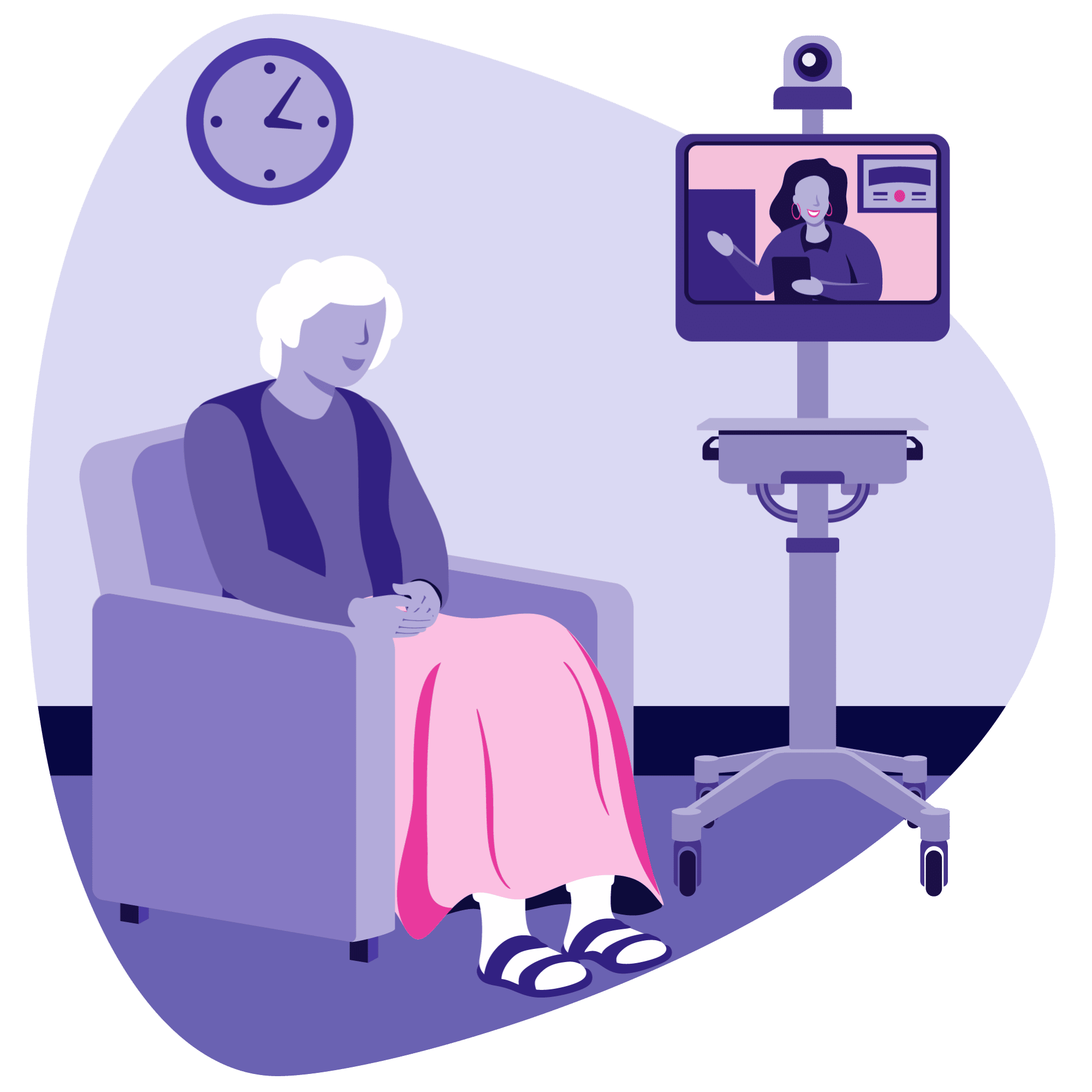According to the World Health Organization, approximately 15% of adults aged 60 and over have a mental health condition. However, less than 3% of older adults receive treatment from mental health professionals. In some cases, this lack of care is due to inadequate access to mental health services, stigma, or other medical conditions that might need attention, too.
With the proportion of the world’s older adults estimated to almost double from about 12% to 22% between 2015 and 2050, it is more imperative than ever to start addressing both the physical and mental needs of this population.
Thankfully, telepsychiatry can connect older adults to quality mental health care, effective screening, evaluation, and treatment.
The state of mental health and aging
For older adults, there are several barriers that stand between them and getting the mental health care they need. These barriers might include access challenges, unnoticed behavioral health conditions, or co-occurring physical conditions that require treatment. Additionally, according to Mental Health America, 58% believe depression is a normal part of getting older, and only 42% of older adults would seek help from a health professional for depression.
This population can also be vulnerable to other mental health challenges like trauma and anxiety. Unfortunately, many of these conditions go untreated or undiagnosed, resulting in frequent doctor visits, emergency department visits, higher use of medication, and extended hospital stays.
While this population faces unique challenges, there is still great opportunity for them to get the mental health care they need.
How organizations can help effectively treat geriatric populations
As an organization, you can help support the geriatric population in your community by providing access to mental health care through telepsychiatry. Telepsychiatry is an essential tool that helps this population virtually connect with providers without having to navigate through waiting rooms or receive unnecessary exposure to outside elements. When patients connect with a provider from the comfort of their own home, it allows them to receive the care they need from wherever they are.
Whether your organization is seeing a large influx of older adults needing mental health care or you’ve just started integrating telepsychiatry, here are a few tips you can leverage to better serve this population.
Here’s how organizations can take action to offer a more effective and comfortable experience for older adults:
- Promote collaboration: The ED can be a costly and high-risk endeavor for older adults. That’s why having support for caregivers and providers can be essential. Before older adults need emergency department (ED) intervention, leveraging telepsychiatry can be a great way to de-escalate situations. Collaborating with caregivers and specialty care providers through telepsychiatry can allow older adults to receive mental health care from anywhere in the country.
- Empower caregivers: Caregivers may be juggling the care of their loved ones with their own full-time jobs, families, and even their personal health. As a solution, telehealth offers a new way to bring training to caregivers on their own time. Sharing strategies with caregivers about home safety and medical care through telehealth allows for a better quality of life for the older adults they provide care for at home. Equipping them with the right skills and techniques to care for their loved ones can be a beneficial resource for keeping older adults healthy at home.
- Intervene early: Having decision trees or care pathways in place for your providers to follow can keep older adult patients healthy between appointments. Rather than waiting, it’s better to intervene early by starting with screening. Leveraging the expertise of specialty mental health providers can relieve stress on care teams and take the pressure off primary care providers through collaborative care.
- Establish memory care units or dementia care: Memory care units or dementia care units can provide older adults with individualized services if diagnosed with Alzheimer’s or dementia. It can also provide a safe environment for easy monitoring while promoting independence.
- Take a holistic approach: Provider collaboration leads to a holistic approach to patient care. While addressing the physical health of this population is essential, it’s important to screen them for mental health conditions as well. Telepsychiatry can offer an easier way to diagnose older adults and mitigate emergency intervention. Additionally, integrating a virtual care option can support your on-site team by allowing them to collaborate with other providers.
Promoting access to geriatric mental health through telepsychiatry
Providing telepsychiatry to older adults increases their access to the specialty mental health care they need. While this population may face a stigma that says they’re not tech-savvy, it isn’t true.
Technology usage among older adults has increased during the pandemic. The American Association of Retired Persons (AARP) reports that 44% of older adults view technology as a positive way to stay connected. In addition, the American Psychiatric Association (APA) says that telepsychiatry has helped treat many behavioral health conditions like dementia, anxiety, and others since the late 1900s.
Telepsychiatry for the geriatric population provides patients with a sense of autonomy while extending services to those who cannot leave their homes. As technology usage increases, older adults can feel at ease knowing they have options to take care of their health.
Where Iris Telehealth fits in
At Iris, we believe that everyone should have access to mental health services in their community. If you’re an organization looking to incorporate telepsychiatry for your geriatric population, we can help. Contact us today if you would like to learn more about how telepsychiatry can help provide behavioral health services and increase access for older adults in your community.


